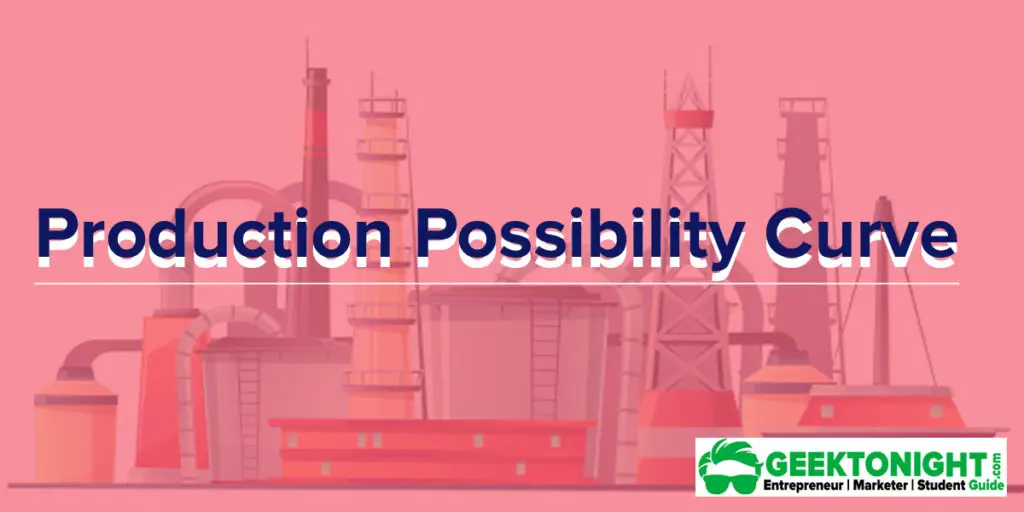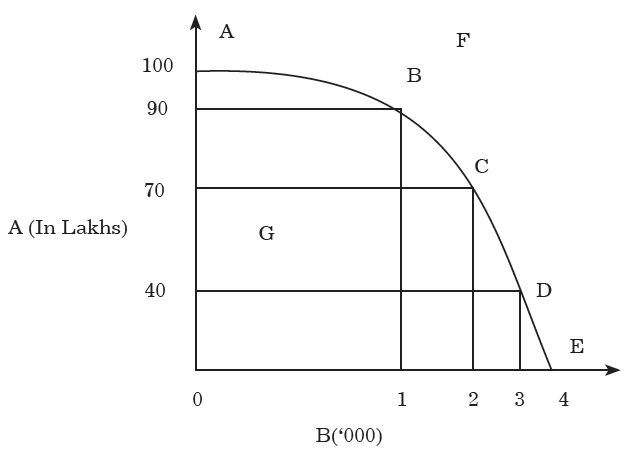What is Production Possibility Curve?
In economics, the Production Possibility Curve provides an overview of the maximum output of a good that can be produced in an economy by using available resources with respect to quantities of other goods produced. It is also known as Production Possibility Frontier (PPF) or transformation curve.

Table of Content [Show]
Also Read: Production in Economics
Production Possibility Curve Example
Let us learn Production Possibility Curve with the help of an example.
Suppose an organisation decided to produce two goods A and B with its available resources. If all the resources are used in producing A, then 100 lakh units of A can be produced, whereas if all the resources are used in producing B, then 4000 units of B can be produced. If both the goods are produced, then there is possibility of various combinations as shown in Table:
Production Possibilities
| A ( IN LAKHS) | B (IN THOUSANDS) |
|---|---|
| 100 | 0 |
| 90 | 1 |
| 70 | 2 |
| 40 | 3 |
| 0 | 4 |
Let us draw the PPC from Table, as shown in Figure

As shown in Figure, the attainable combinations are A, B, C, D and E from the given resources. A and E are the combinations that produce only one good at a time. The unattainable combination is F as it is outside the PPC. G is the inefficient combination, which is inside the PPC. It implies that the resources are underutilised.
From Figure, it can be noticed that PPC is concave to origin. It is because the increase in production of one unit of good is accompanied by the sacrifice of units of the other good. The rate at which an amount of product is sacrificed for producing the amount of another product is called Marginal Rate of Transformation (MRT).
For example, in case of A and B, the amount of product B that is sacrificed to produce the amount of product A is termed as MRT. The slope of PPC is also MRT. Increasing MRT implies increasing slope of PPC.
Uses of Production Possibility Curve
Let us discuss some important Uses of Production Possibility Curve:
- It enables the planning authority of a developed nation to divert the usage of its resources for the production of necessary goods to the production of luxury goods and from consumer goods to producer’s goods, after a certain point of time.
- It helps a democratic nation to focus and shift a major amount of resources in the production of public sector goods instead of private sector goods. The public sector goods are supplied and financed by government, such as public utilities, free education and medical facilities.
On the other hand, private sector goods are manufactured by privately owned organisations and are purchased by individuals at a certain price. - It helps in guiding the movement of resources from producer goods to capital goods, such as machines, which, in turn, increases the productive resources of a country for achieving a high production level.
Leave a Reply